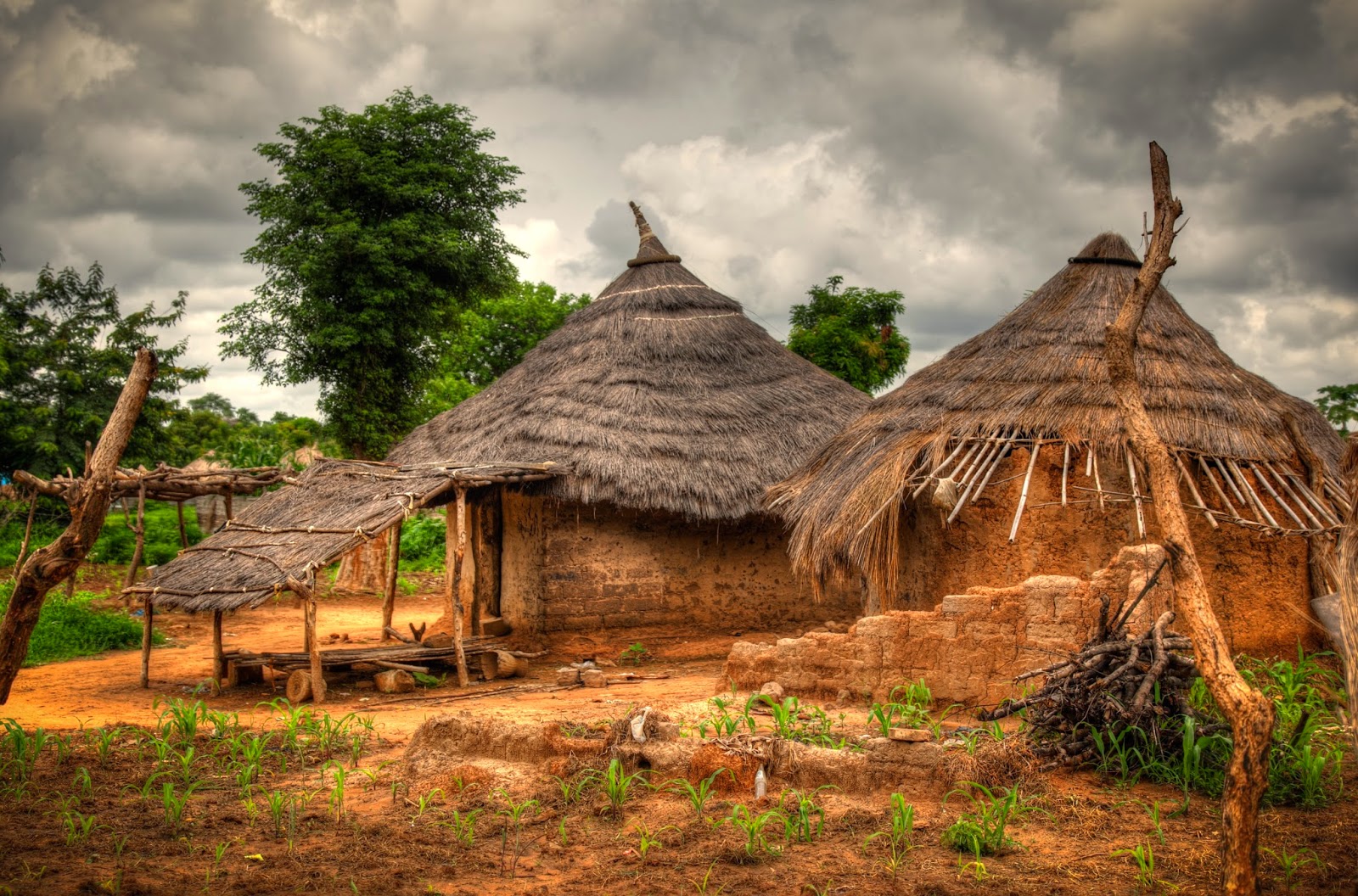From Kololi to Basse Santa Su: a trip into another world. Part 1
Tuesday Dominic and I set out for Basse Santa Su, one of the most eastern towns in the Gambia on the south bank of the Gambia river. Everyone declared us crazy to undertake such a trip in the one of the hottest months of the year during rainy season. Luckily for us the south bank highway leading to Basse was asphalted over two years ago, otherwise this trip would have been much more dangerous and lengthy and impossible to undertake without a four wheel drive. It took us about eight hours to drive the 370 km. to Basse.
The type of building materials used in construction of housing are a good indicator of the level of development and prosperity. Cement and sand is expensive, and so is corrugated steel for roofing. In middle and eastern Gambia, people simply cannot afford it. The overall level of development in eastern Gambia lags far behind the western part. In most villages there is no access to electricity, let alone TV or Internet, and water is drawn from a common well. There is usually a elementary school and sometimes a secondary school, but no access to health care. The nearest clinic could be as far as 100km from the village. Transport is done by bushtaxi (a converted minivan), or by walking. We saw hundreds of people walking along the highway in the pouring rain; they simply cannot afford a bushtaxi.
Travelling through middle and eastern Gambia made me realise how different Kololi is where I live, with its supermarkets, restaurants, beaches, and access to Western goods and food. How it is not representative of the conditions the average Gambian lives in, not even close. In Kololi, compounds (houses) are made out of brick or concrete, have corrugated steel roofs, and a brick wall surrounding the property.
As we were driving east, I began to notice small differences in the compounds of the villages we past through. Some still had brick walls around them, but some were constructed of clay and straw instead of brick or concrete. By the time we passed Soma, a large village about one third of the way to Basse, most compounds had walls made from woven palm leaves. Past Bansang, we encountered villages consisting entirely of roundhouses, traditional African houses made from mud and clay, with roofs made from straw.
 |
| Roundhouse in Kerewan Badala |
 |
| Woman walking in Kerewan village |
Passing through these villages I kept thinking how hard life must be there. What do people do besides work the land? There are no cafes or restaurants, they are impossible to operate without electricity. I saw hundreds of people just sitting on their veranda doing absolutely nothing. I asked Dominic who was in the driver's seat, and he just smiled and said that they drink green tea on their veranda or talk amongst themselves. He explained that if you have never been exposed to Internet or TV, you don't know any better and accept life as it is.
I nodded and resisted the urge to check my Facebook feed.

Comments